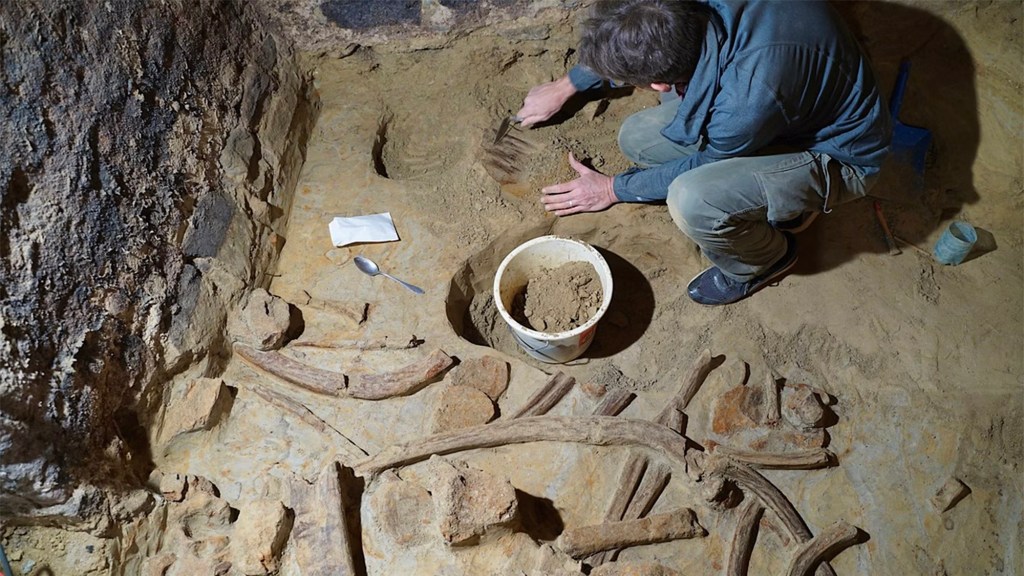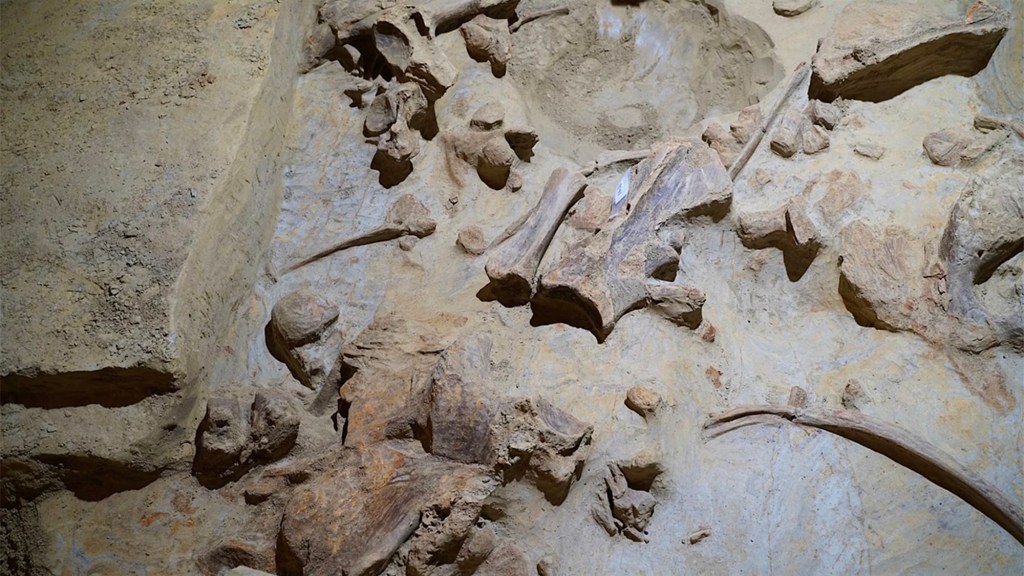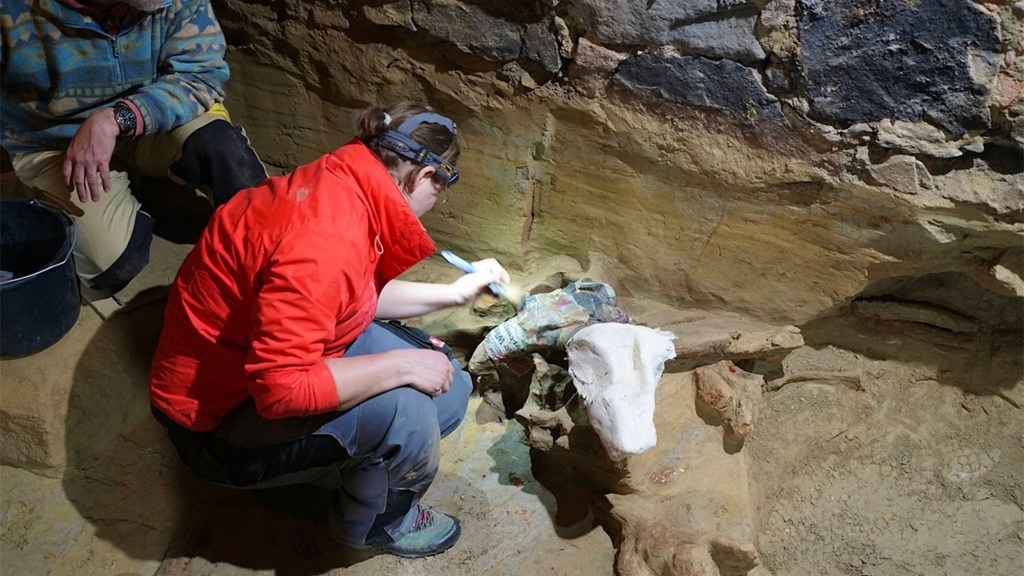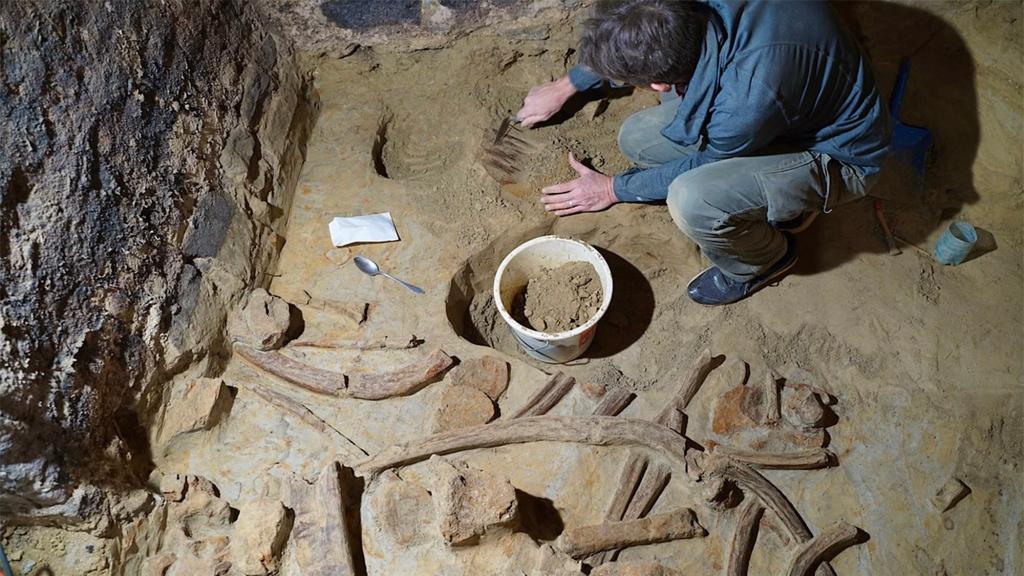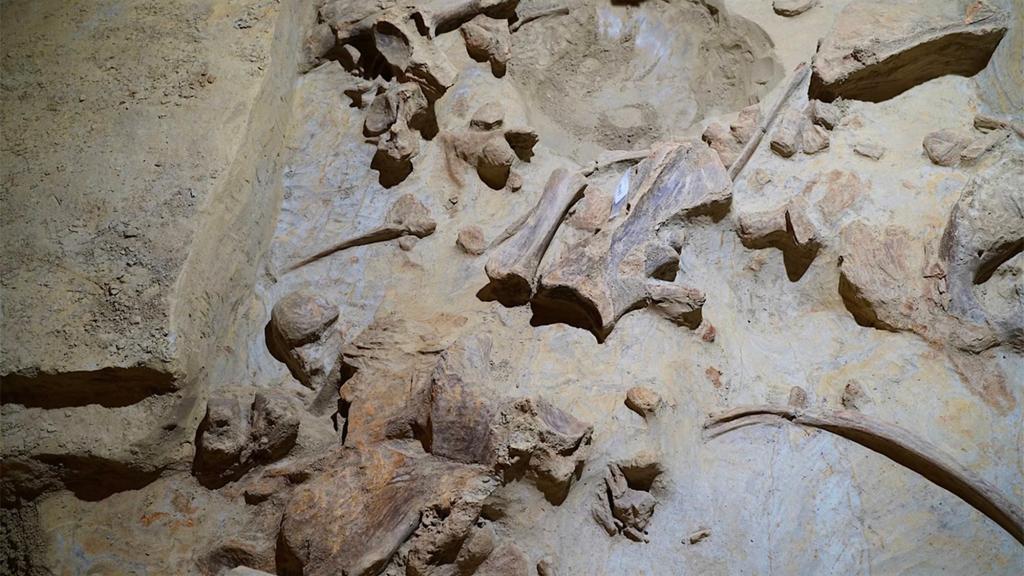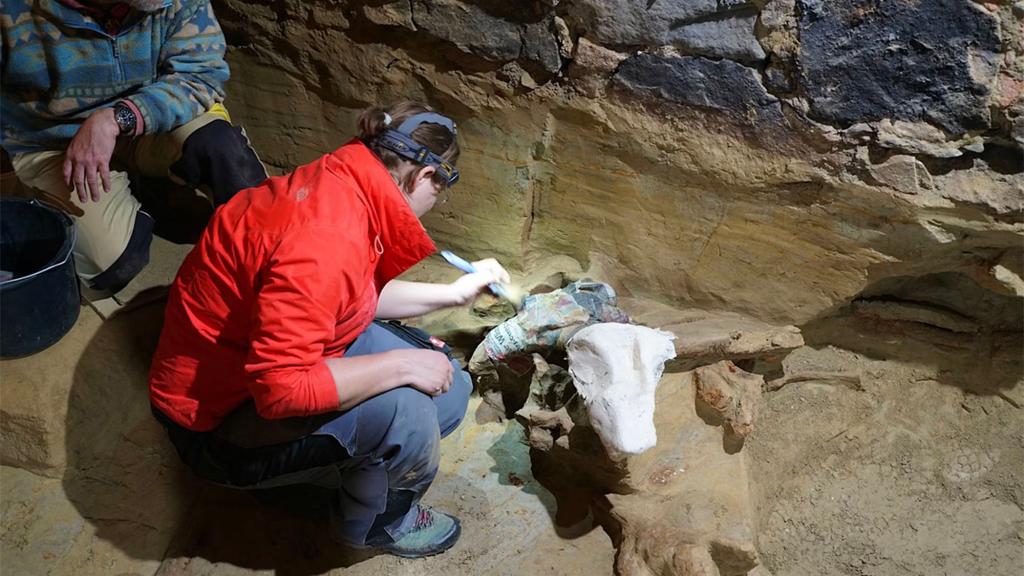Aged like fine wine: Hundreds of ancient mammoth bones unearthed in Austrian wine cellar
Hundreds of ancient mammoth bones have been uncovered beneath an Austrian wine cellar in what experts dubbed an “archaeological sensation.”
Andreas Pernerstorfer, of Gobelsburg, was renovating his wine cellar in March when he came across the massive bones, the Austrian Academy of Sciences (OeAW) announced Wednesday.
The archeologists who took over the site in May said about 300 bones had been found belonging to at least three mammoths, with the ancient remains believed to be between 30,000 to 40,000 years old.
“Such a dense layer of bones is rare,” Hannah Parow-Souchon, who is leading the excavation, said in a statement. “It is the first time that we have been able to examine something like this in Austria using modern means – a unique opportunity for research.”
Pernerstorfer was simply looking to level out the floor in his cellar when he unearthed some of the mammoth bones, the winemaker initially unsure what he found.
“I thought it was just a piece of wood left by my grandfather,” he told the Austrian Broadcasting Corporation. “But then I dug it out a bit ,and then I remembered that in the past my grandfather said he had found teeth. And then I immediately thought it was a mammoth.”
Pernerstorfer reported the discovery to the Federal Monuments Office, which alerted the OeAW, which launched a full expedition earlier this month.
The discovery will allow researchers to learn more about the massive extinct beasts, and it may shed clues on the mystery of how mankind was able to dominate such behemoths.
“We have strong indications that they hunted for them but we have no idea how,” Parow-Souchon said of early man.
Researchers are hoping that the wine cellar could in fact be a hunting site that helps answer this very question, with Parow-Souchon suggesting a trap may have been set for the mammoths at the cellar’s location.
Once the archeologists excavate all the bones and wrap up their work, the remains will be sent off to the Vienna Museum of Natural History for restoration and further research, officials said.
Woolly mammoths inhabited regions of the northern hemisphere for at least 500,000 years before their populations began to shrink significantly around 10,000 years ago, according to the UK Natural History Museum.
The last mammoths to roam the earth died around 4,000 years ago.








